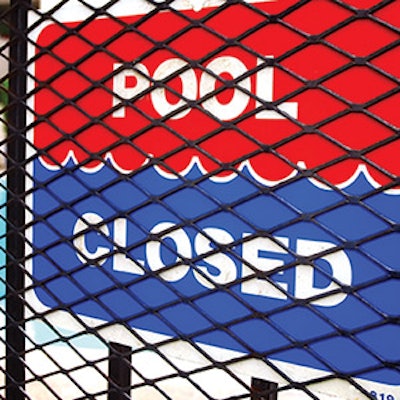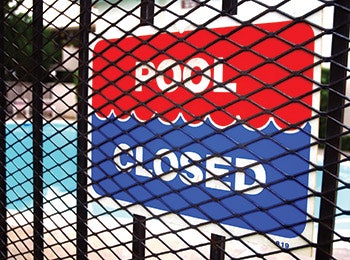

In the July edition of AQUA Architecture, I tackled the subject of why public pools are closing at an alarming rate — and what can be done about it. It's a vast topic that cuts across a number of issues critical to the long-term success of the pool and spa industry as well as the future of aquatics in society as a whole.
In a nutshell, the complex phalanx of issues involved in bolstering the viability of public aquatic facilities comes down to economic fundamentals and common sense.
The National Swimming Pool Foundation is one of the organizations most involved in the field of public swimming pools. For decades, the foundation has developed numerous programs and research aimed at supporting the work of aquatic professionals working a public setting.
Unsurprisingly, NSPF's CEO Tom Lachocki has a few things to say about the plight of community pools and the crucial role they play in the communities they serve.
"It's important to keep pools open because it gives people a venue to have activities that help them lead healthier lives," he says. "I think part of the challenge is that the recession caused a lot of people to take a closer look at their pools because of the economic pressure. And, unfortunately, that has caused a great many to make a decision to close their pools.
"It's reinforced something that we've known for a long time, and that is both the government and private sector have to operate based on economic principles. If not, it doesn't matter where the money comes from, because they're going to be vulnerable. Facilities that don't earn enough revenue to meet their operational expenses are inevitably going to be facilities at risk."
The other side of the coin, he says, comes into play when facilities do meet their operating expense and even put some money away that can be for investments in that facility in the future.
"Do you think legislators, mayors or city councils are going to close that facility, of course not! Now how do you do that? How do you generate sufficient revenue? We have to increase demand, and that means getting more people to swim and people who do swim to swim more often."
Because age and obsolescence are issues confronting many facilities, part of the long-term solution is to invest in repair and renovation along the way rather than allowing pools to fall into disrepair.
"I look at this way: If you have a facility that generates enough revenue so that operators can invest in upgrades to keep it more attractive and as a result continue to meet stakeholders needs, then it's not really a 40-year old facility, it's a fabulous facility that happens to have been built 40 years ago," Lachocki says.
"There's no getting around economics. You have to understand the needs of the community, develop programs that target those needs and promote the benefits to the community. It's critical to understand the demand and seize those opportunities, whether it's local swim clubs, learn to swim programs, programs for seniors. You have to seize those opportunities. Then if you charge a reasonable fee and can maintain and improve your facility, it becomes much easier to see investing in other facilities in the future. It all goes hand in hand."
As for the pool and spa industry's role in supporting the viability of community pools, "Again, it's all about demand. If our industry can promote the benefits of swimming, the enjoyment and health benefits of aquatic activity, then we're going to be successful.
"If all the questions point to a single answer, then that's a really important answer," he concludes. "That answer is generating demand. That's what it all boils down to."
Comments or thoughts on this article? Please e-mail [email protected].








































